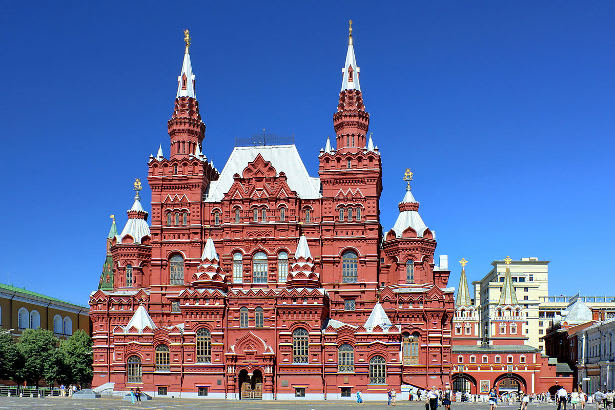Cathedral of Christ the Savior
Address:
The Cathedral of Christ the Savior is a remarkable landmark located in the heart of Moscow. Situated on the northern bank of the Moscow River, the cathedral is just a few blocks southwest of the Kremlin and Red Square, two of the most iconic sites in Moscow.

The location of the cathedral is significant, as it stands prominently in the center of the city, easily accessible and visible from various parts of Moscow. It is also near the Pushkin Museum of Fine Arts and the historic Arbat Street, making it a part of a rich cultural area frequented by tourists and locals alike.
Cathedral of Christ the Savior Architecture
The Cathedral of Christ the Savior stands out with its imposing and grandiose architectural design. It is an exemplary illustration of Russian Orthodox architecture, combining elements of neoclassicism and Byzantine art.
The cathedral features an overall traditional cross-shaped plan and is crowned with a central dome flanked by four smaller domes. The main dome rises approximately 103 meters (338 feet) high, making it one of the tallest Orthodox Christian churches in the world.
The exterior of the cathedral is adorned with intricate sculptures and reliefs, white marble facades, and golden domes that gleam under the sunlight.
Inside, the cathedral's spacious interior is lavishly decorated with ornate frescoes, mosaics, icons, and luxurious materials, including marble, malachite, and lapis lazuli. The design intends to inspire awe and reverence, reflecting the glory of God in Orthodox Christian theology. The layout also accommodates a vast congregation, with an area designed for massive religious services and ceremonies.
Cathedral of Christ the Savior History
The original idea for constructing the cathedral dates back to 1812, when it was conceived as a monument to honor the Russian victory over Napoleon.
The architect Konstantin Thon was later commissioned to design the building, and construction started in 1839. However, the cathedral's completion was not until 1883 during the reign of Tsar Alexander III.
The original cathedral had a short-lived history. In 1931, during the anti-religious campaign of Joseph Stalin's Soviet era, it was demolished to make way for a proposed (but never completed) Palace of the Soviets.
For more than five decades, the site was home to various public projects, including one point, a large swimming pool known as Moskva Pool.
In the 1990s, following the end of the Soviet Union and the resurgence of religion in Russia, there was a movement to rebuild the Cathedral of Christ the Savior.
The Moscow government and the Russian Orthodox Church supported this initiative, and reconstruction began in 1994. Remarkably, modern builders used the original 19th-century plans, and the newly rebuilt cathedral was completed in 2000.
The cathedral's resurrection has not only restored a major religious landmark but also symbolizes the rebirth of Russian Orthodox Christianity after the oppression of the Soviet era. Today, it serves both as a functioning church and a symbol of Russian national pride and spiritual renewal.


